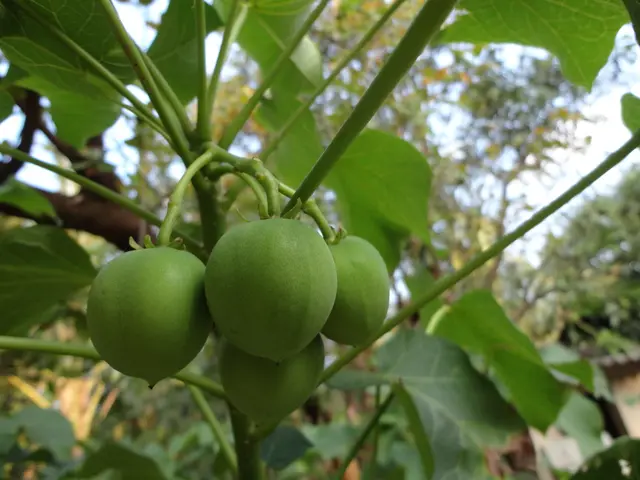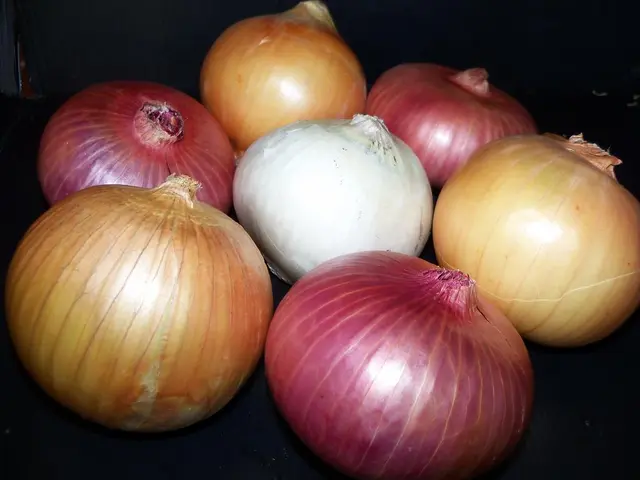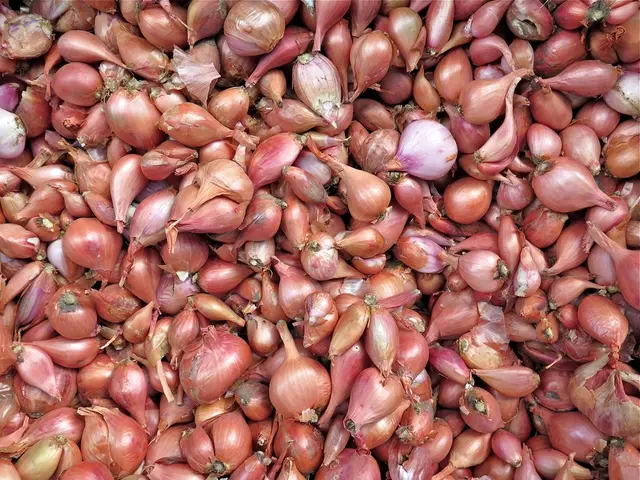Garden Chores I'm Handling in May
Garden Glory: Unleash the Power of May
There's no denying the delight that a garden center in May exudes. The glorious arrays of annuals, veggies, and perennials call out to eager gardeners waiting to add some color to their world. Let's dive headfirst into creating a stunning summer garden! Buckle up those overalls, slap on your sunhat, and grab a spade...it's time to conquer your outdoor wonderland. Here's a breakdown of the essential maintenance tasks, planting tips, and a few insider secrets to help make your summer garden bloom with brilliance.
Essential Garden Maintenance
First things first—ensure your watering systems are in tip-top shape before turning on the irrigation for the summer. With winter came potential damage, so double-check each line for punctures or leaks. If you're the culprit behind any damage, now's the perfect time to make amends.
With the irrigation system checked, it's vital to ensure that the controller is functioning correctly. Step outside and test each zone, roaming around to check every end point. Listen for gushing or hissing sounds as well as visually scanning for any leaks. If you rely on a hose bib setup, give it a once-over too.
Your established beds could also use a bit of TLC. A layer of compost will serve as a general fertilizer and help replenish the beds after winter erosion. Spread the compost with a coating of mulch, giving you the opportunity to assess each section of the garden as you go. Jot down any areas requiring weeding, pest control, or plants that may not have weathered the winter well.
Revive Your Woody Folk: Shrubs, Trees, and Vines
A myriad of shrubs enchants us with their blooms in spring, such as lilac and forsythia. Once they've finished their dance, feel free to snip them back. In some cases, like lilac, this process may even trigger a second bloom later in the season.
Pristine weather and softened soil make this the ideal time to plant new woody shrubs and trees. Established trees should receive a feeding with an appropriate fertilizer. Loppers and pruners will be your new best friends, ensuring clean cuts in your gardening escapades and preventing transmission of disease or fungi between plants.
Climbing perennial vines like clematis, roses, and honeysuckle should be awakening from their slumber. Tie them loosely to their trellises as they ascend.
Playing the Perfect Tune with Annual Flowers
At long last, it's time to introduce some annuals into the mix, providing bursts of color that can last all summer if treated with care. You'll find a smorgasbord of annuals in garden centers, including petunias, lobelia, marigolds, and begonias. These flowerazzis are more tender than their perennial cousins, so hold off on planting until the threat of frost has passed. They're excellent candidates for window boxes and planters as they struggle to survive the winter in inhospitable environments.
Pots, hanging baskets, and window boxes should have a slow-release fertilizer like Osmacote to ensure their survival.
Celebrate the Longevity of Perennial Flowers

Most gardeners have tulips blossoming or recently finished by May—remember not to cut their stems after blooming. Tulips need their leaves to recuperate for next year's show. Once the foliage has yellowed, it's safe to divide or move the bulbs. Give your bulb friends a boost this season with a round of bulb fertilizer.
If you missed grabbing new perennials in April, fret not, for May is still a treasure trove of opportunities. The ground should be in top condition for digging; take note of which plants are begging to be divided as you explore the garden. If you hope to see blossoms this summer, prompt action is essential.
Take full advantage of funeral parlor-level flower prices at stores by scouring their "sad plant shelf" (SPS). These underappreciated plants may not come back this year, but they'll reward you with vibrant blooms next summer. Delphiniums and agastache are two of my favorite finds.
Give your roses a spring fertilizer and shape them up if necessary. Look for signs of stress or pests and administer suitable remedies. Your dependable gardening center can guide you.
Veggie Peace: Let Your Greens Grow
Vegetable enthusiasts across the country wait anxiously for the perfect moment to drop in their tomatoes, peppers, and eggplants. This magical day often comes during May, but keep an eye on the local weather forecast. The critical factor is steady overnight temperatures above 50 degrees.
Prepare your vegetables for the world with a process called hardening off. This involves acclimating your plants to the conditions outside before planting them in their permanent homes.
Perennial vegetables like asparagus and artichokes should be active now. Remember to harvest asparagus daily, snatching only spears larger than your pinky. Once spears become thinner, it's time to let the plants rest for next year. Watch your artichoke plants for aphid infestations, which can be sprayed off, but may return without further treatment like neem oil or trap flowers like nasturtiums. Both asparagus beds and artichokes will benefit from a spring fertilizer.
By mid-May, nearly all regions should be planting their warm-weather crops. Foodies unite in the extraordinary harvest of tomatoes, eggplants, peppers, beans, corn, cucumbers, and more. Direct seed beans, corn, and a variety of squash and melons, but opt for starts with tomatoes, eggplants, and peppers for a head start.
Thrill your potato plants by hilling earth around the sprouts, and thin out strawberry beds of runners to encourage larger, more abundant fruit.
Pest Control and Weed Management
Control snail and slug populations by utilizing traps and conducting regular nighttime hunts. Launching this campaign now, as the rainfall subsides, fights pesky molluscs later in the season. Install pheromone traps in your fruit trees to repel pests and safeguard your harvest. With ongoing vigilance, you'll maintain a healthy, blooming garden worth showing off this summer.
- In May, after checking for potential damage from freezing weather in April, ensure your watering systems are scanned for punctures or leaks before turning on the irrigation for the summer.
- Scour your local garden center or home-and-garden store in May for discounted annual flowers, like petunias, lobelia, marigolds, and begonias, to add some color to your summer garden.
- Once the blooms of lilacs and forsythia have finished in May, pruning these shrubs can trigger a second bloom later in the season, a gardening secret to maintain a vibrant lifestyle.
- Don't forget to jot down areas in your May garden that require weeding, pest control, or plants that didn't weather the winter well during the process of adding a layer of compost and mulch to your established beds.
- Taking care of established trees in May involves pruning them with loppers and pruners, giving them a feeding with an appropriate fertilizer, and tying any awakening climbing perennial vines like clematis, roses, and honeysuckle to their trellises.









